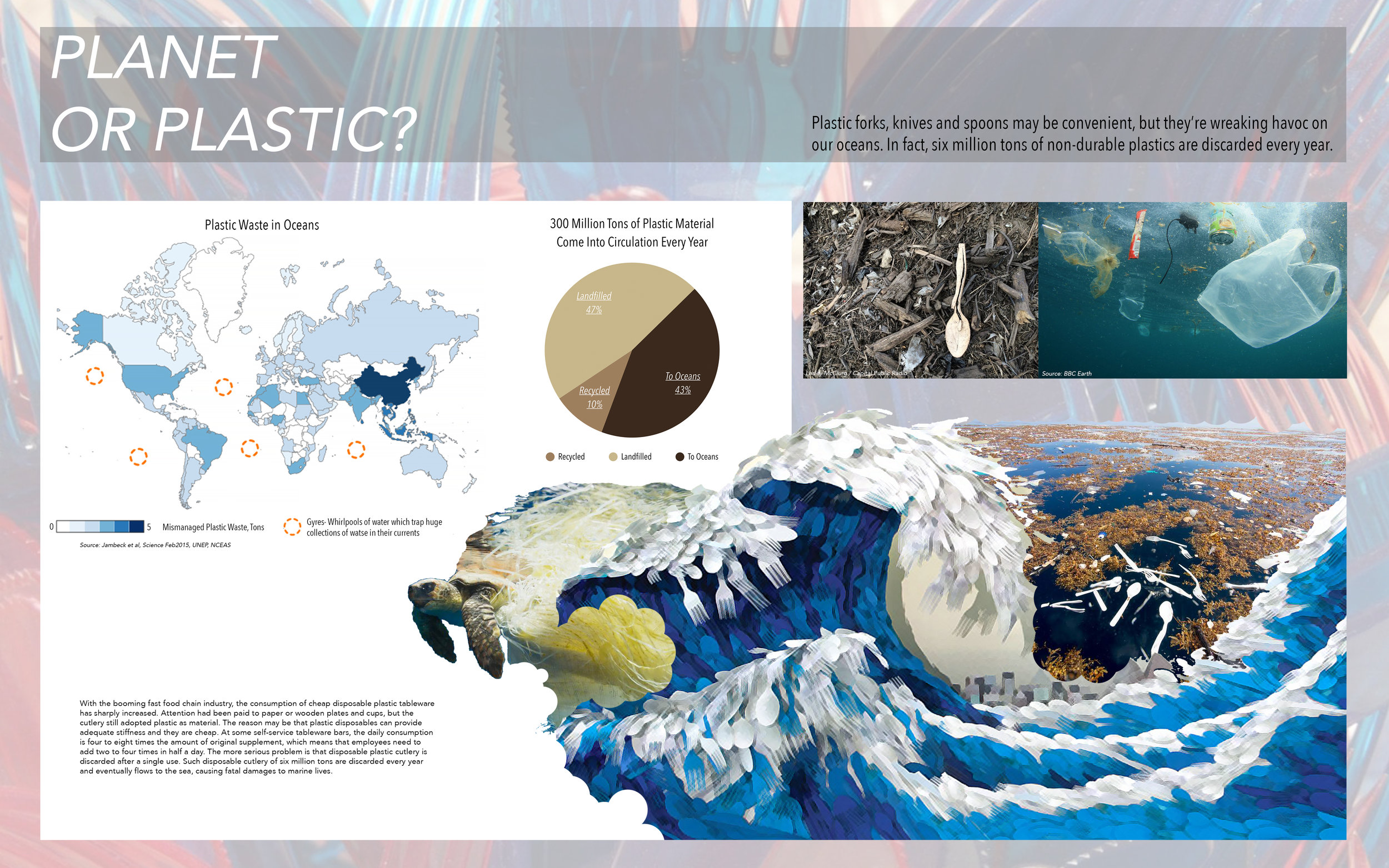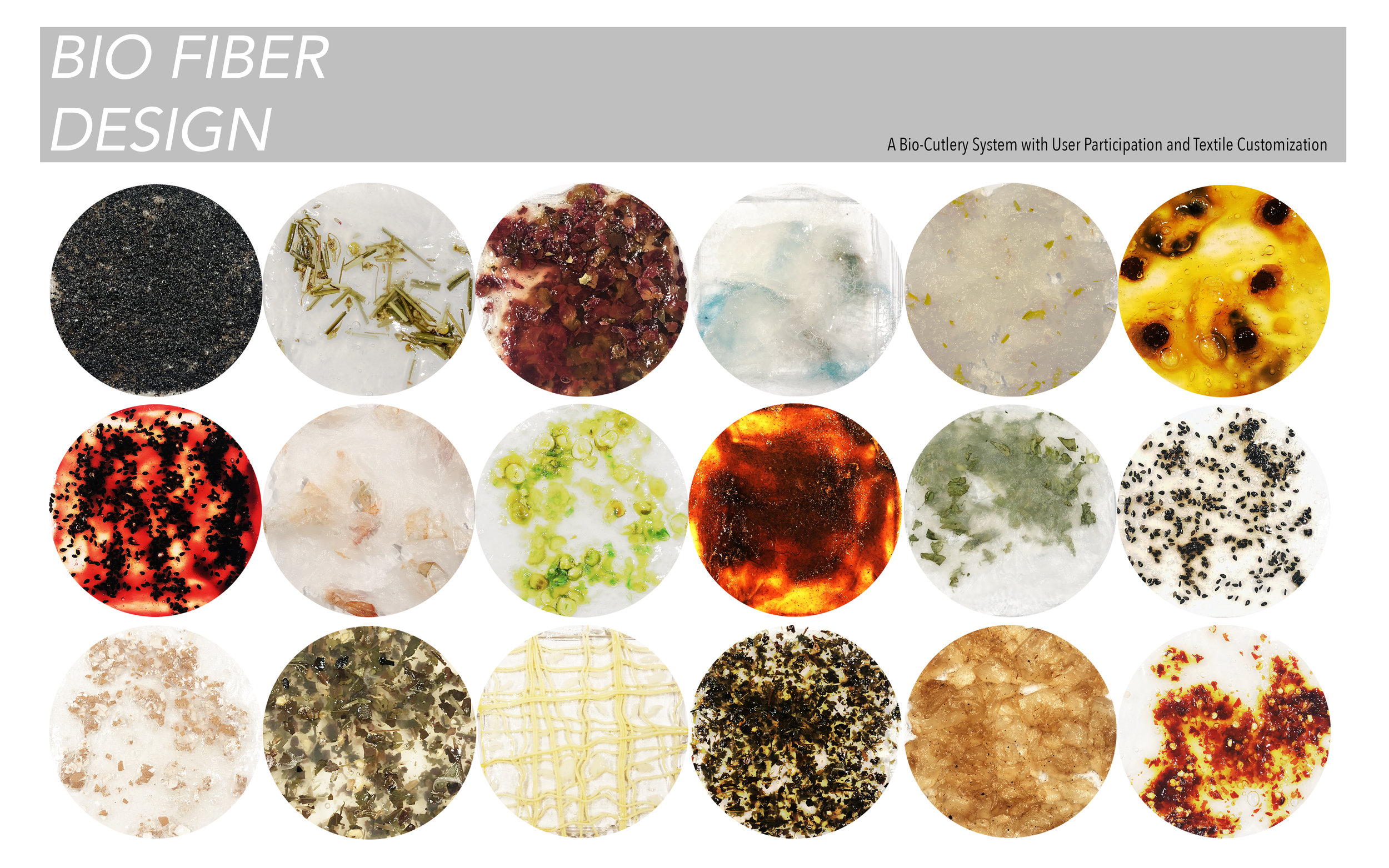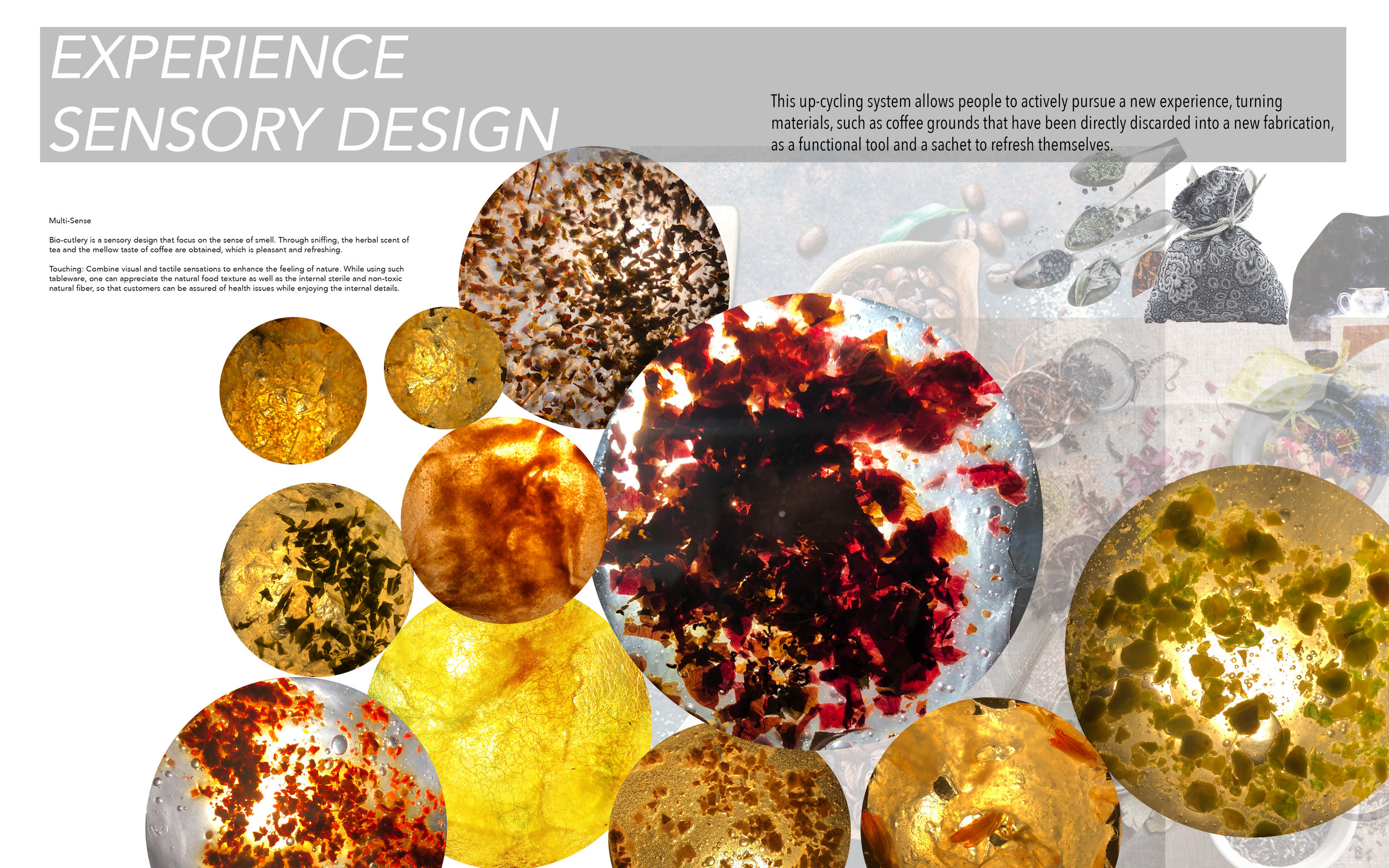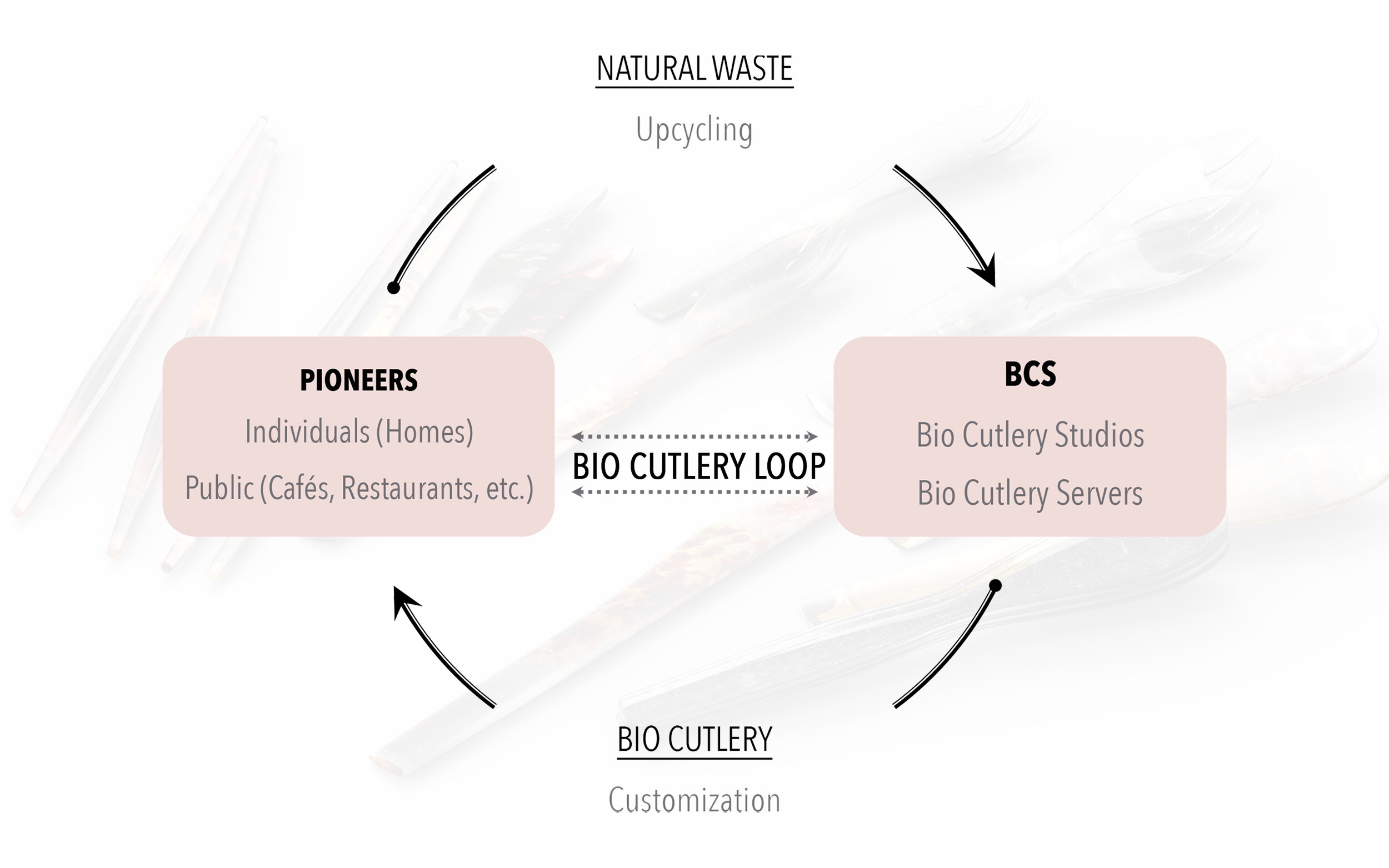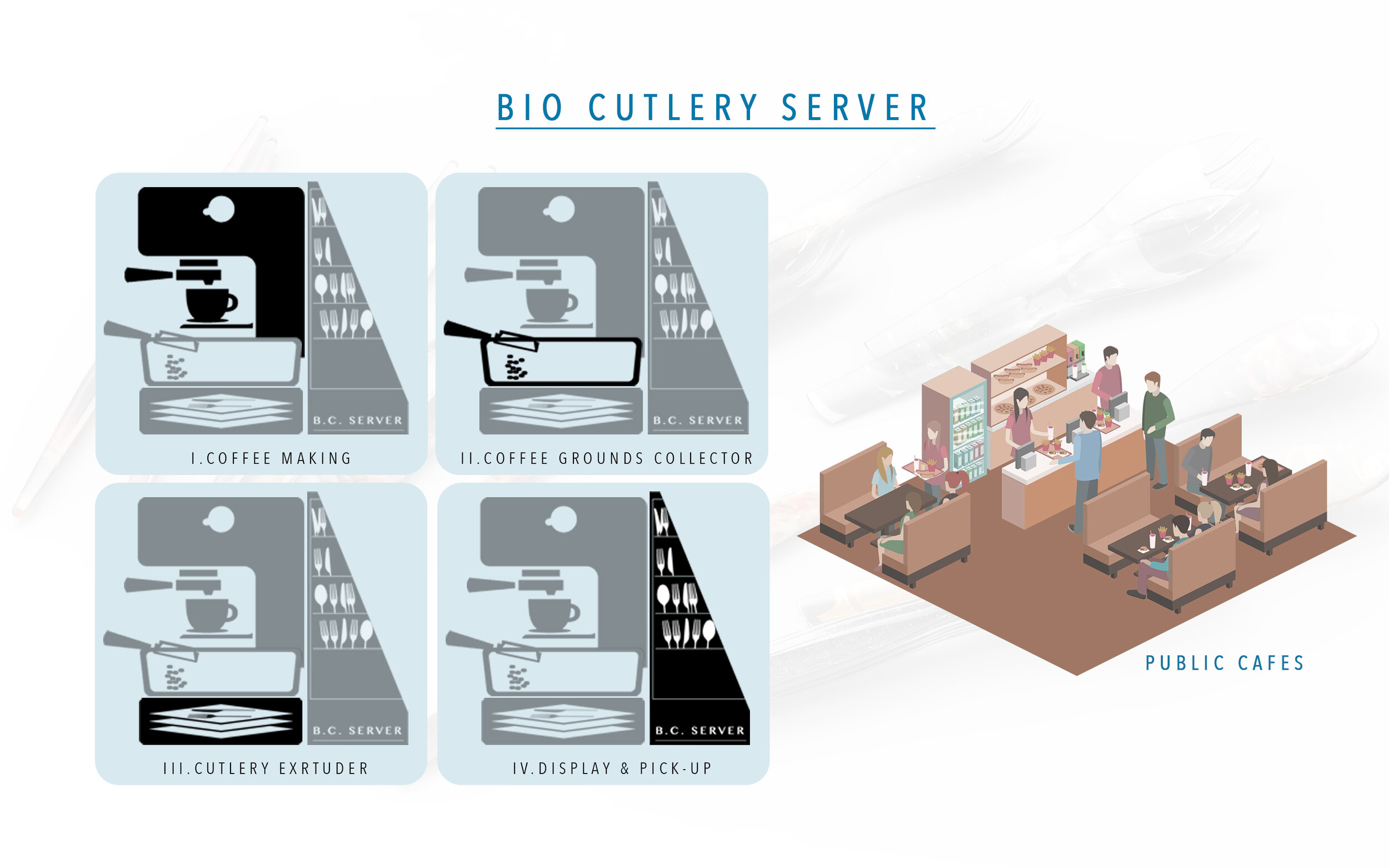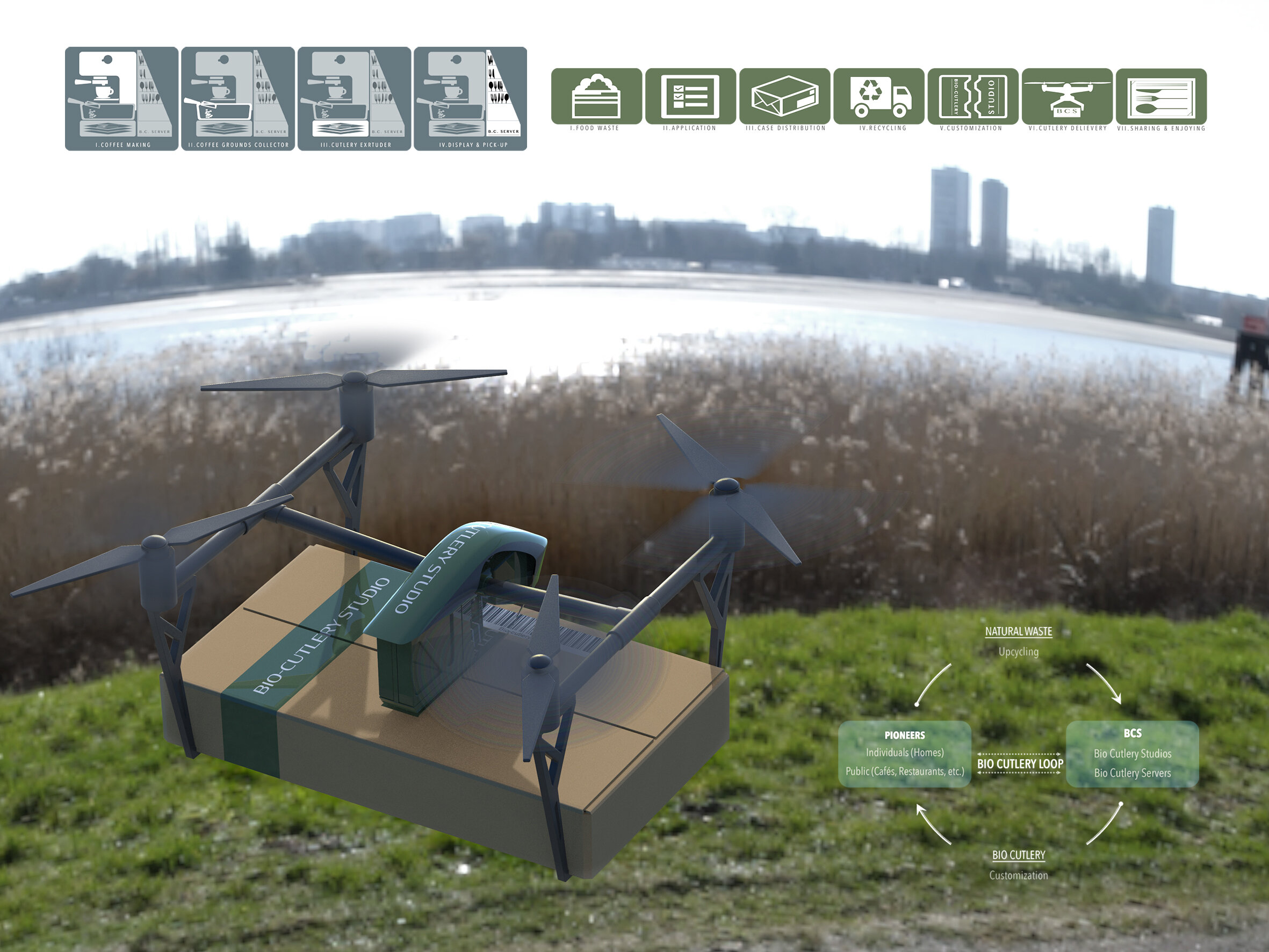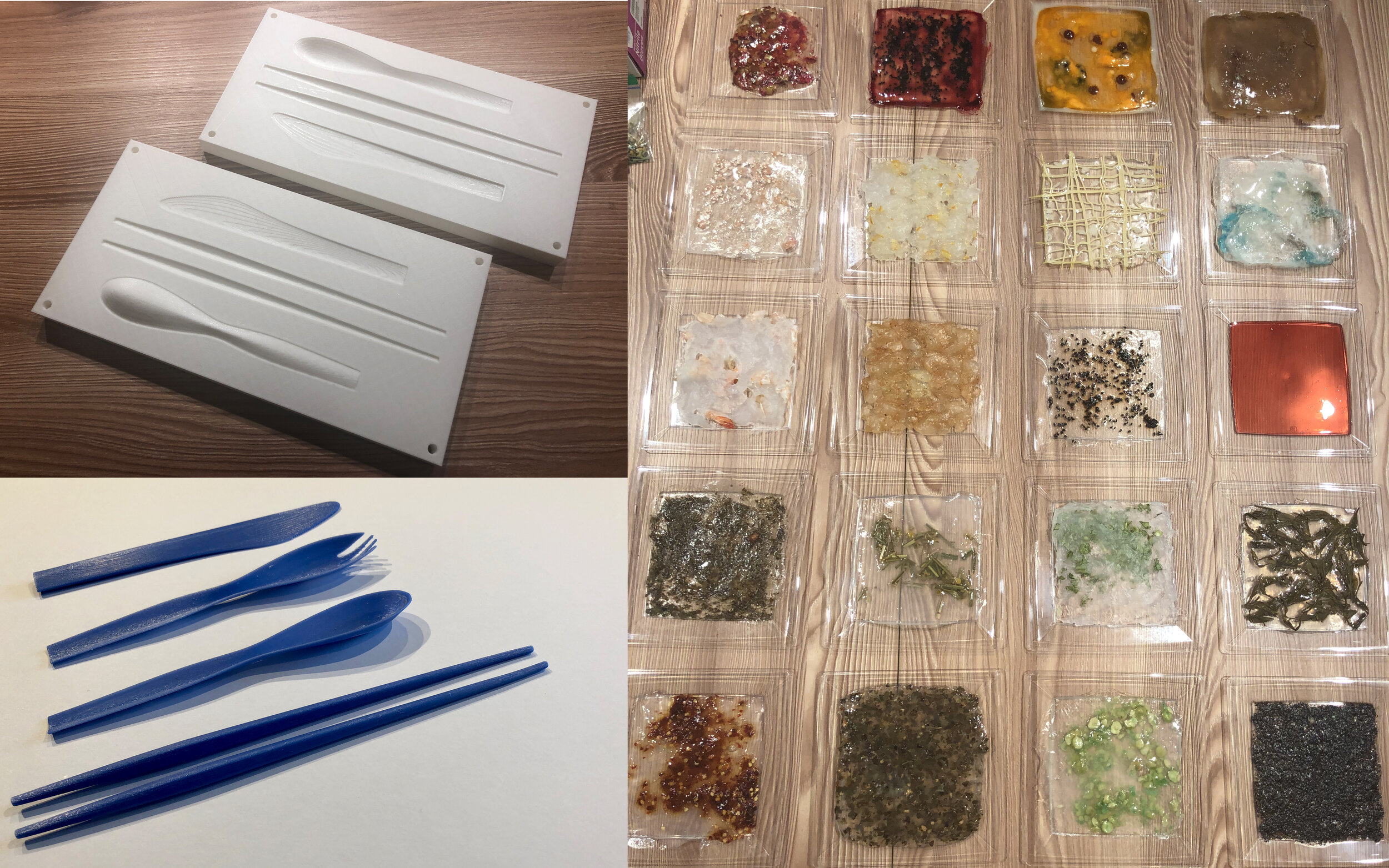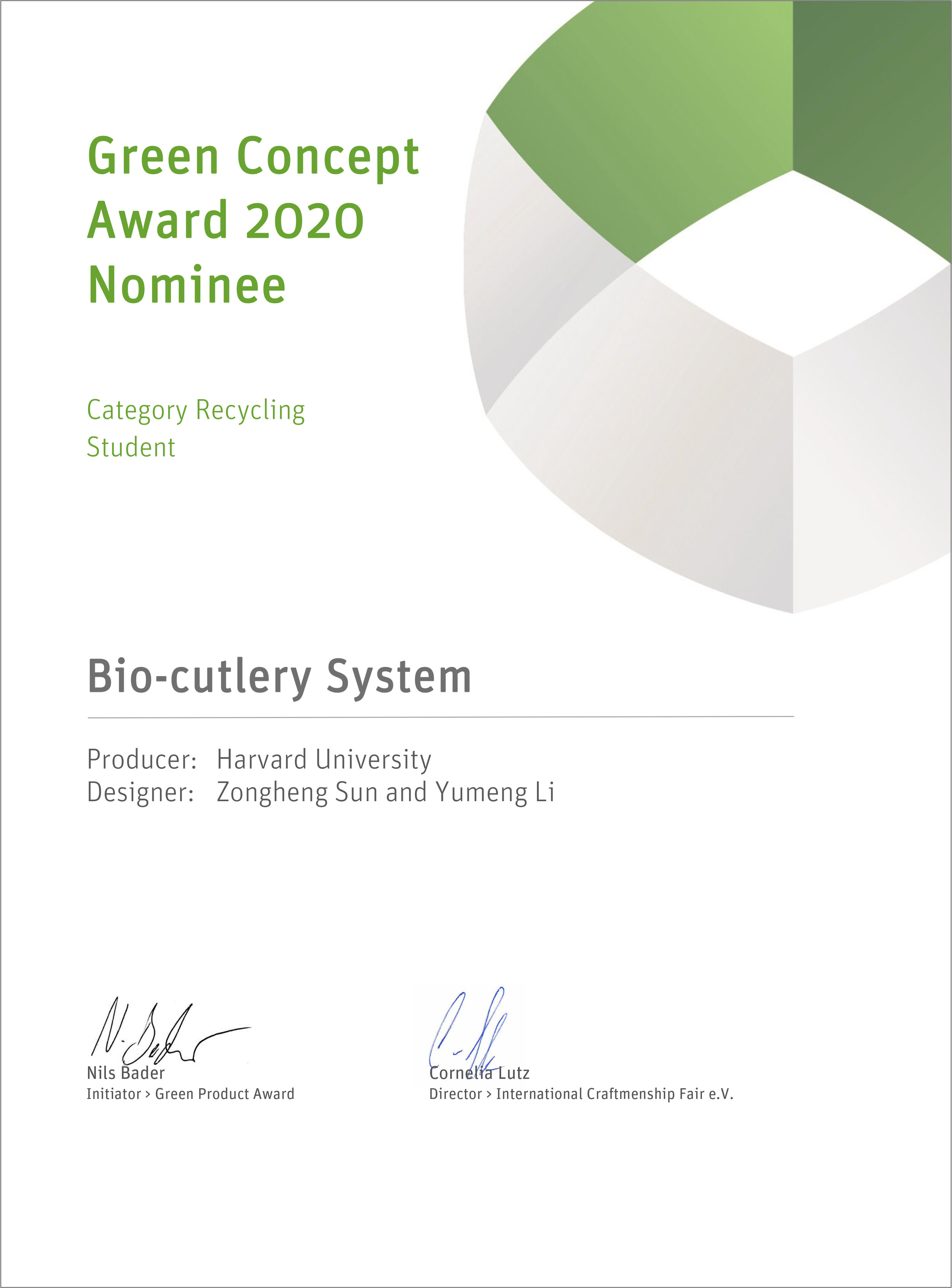Bio-cutlery System: From Waste to Heritage
#Sustainability #Material #Eco-plastic #3DPrint #Upcycling #CircularEcomnomy
Planet or Plastic? The Hidden Cost of Disposable Cutlery
Plastic forks, knives, and spoons are everywhere—cheap, convenient, and readily available. But their ease of use comes at a devastating cost. Each year, six million tons of non-durable plastics are discarded, much of it ending up in our oceans, where it wreaks havoc on marine life.
With the rise of fast-food chains and self-service dining, plastic cutlery consumption has surged. At some restaurants, disposable tableware usage is four to eight times the original supply per day, meaning staff must restock multiple times within hours. Worse yet, these utensils are used once and thrown away, contributing to an overwhelming accumulation of plastic waste.
While efforts have been made to replace plastic cups and plates with paper or wood alternatives, cutlery remains largely plastic due to its required stiffness, durability, and low cost. But what if we could challenge this norm by creating cutlery that is not just biodegradable, but also culturally meaningful and sensorially enriching?
Waste or Heritage? A Second Life for Coffee & Tea Residue
Two of the world’s most culturally significant beverages—tea and coffee—are deeply woven into daily life. Whether it’s a morning espresso or an elaborate tea ceremony, these drinks shape social interactions, traditions, and rituals.
Yet, despite their cultural importance, their byproducts—spent coffee grounds and tea leaves—are treated as nothing more than waste. In a ceremonial tea ritual, each step is precise and elegant, but what happens to the discarded tea leaves is never considered part of the process. Similarly, tons of coffee grounds from cafés and restaurants are dumped daily, with no second thought.
This paradox led to a simple yet powerful question:
What if we could transform these natural materials into a sustainable solution—one that not only reduces waste but also enhances the dining experience?
Thus, the concept of Bio-Cutlery was born—a new kind of biodegradable utensil made from coffee grounds, tea leaves, and other organic fibers, paired with a user-participated recycling system that turns waste into something meaningful.
Experience Sensory Design: More Than Just a Spoon
Bio-Cutlery isn’t just about sustainability—it’s about enhancing the dining experience through sensory design. Each utensil is designed to engage multiple senses, turning an everyday object into something tactile, fragrant, and immersive.
🌿 Smell – The herbal aroma of tea and the rich scent of coffee linger in the material, providing a subtle, refreshing experience with every use.
🖐 Touch – The surface of Bio-Cutlery retains the natural texture of the original material, allowing users to feel the organic fibers while eating.
👀 Visual Appeal – Instead of uniform plastic, each piece of cutlery features a unique internal structure, visible through its semi-translucent form, creating a distinct, memorable aesthetic.
Unlike conventional cutlery, which is simply functional, Bio-Cutlery creates a ritual-like interaction, allowing people to appreciate the full lifecycle of food and materials—from preparation to reuse.
Prototyping the Future: Turning Waste into Utility
Applying natural material textures to cutlery is a novel approach. It not only replaces plastic waste but also introduces a new way of experiencing meals. The transparency of Bio-Cutlery allows users to see the natural fibers inside, connecting them to the source of the material and reinforcing the idea that waste can be repurposed meaningfully.
Each utensil carries the history of the material it comes from, preserving the cultural heritage of coffee and tea while offering an eco-friendly alternative to disposable plastics.
Upcycling a Better Future: The Bio-Cutlery Loop System
Beyond being biodegradable, Bio-Cutlery is part of a circular economy model—a closed-loop recycling system that ensures continuous upcycling of food waste into functional products.
🔄 The Bio-Cutlery Loop System Includes:
1️⃣ Bio-Cutlery Server – An innovative system embedded into commercial coffee machines, allowing cafés and restaurants to immediately repurpose spent coffee grounds into cutlery.
💡 Imagine a Starbucks location where customers receive a coffee-ground spoon made from the very coffee they just ordered—illustrating real-time sustainability in action.
2️⃣ Bio-Cutlery Studio – A home-based upcycling program where families can collect and submit their own coffee and tea waste to be turned into customized cutlery.
📦 Collected materials are transported via Express and BCS Drones, making sustainable participation autonomous and effortless.
This system transforms waste management into a shared responsibility, giving individuals and businesses a direct role in environmental conservation.
Beyond Sustainability: A Social & Environmental Movement
In the long run, Bio-Cutlery is more than just an alternative to plastic—it’s an interactive sustainability movement. By making waste reduction participatory, it fosters a culture of awareness, responsibility, and innovation.
🌍 A Direct Link Between Consumption & Conservation – Users physically see and experience how waste can be repurposed, reinforcing sustainable habits.
🏡 Bridging Individual Action with Systemic Change – From small households to global coffee chains, the Bio-Cutlery Loop System enables collective impact.
🛠 Encouraging More Experiments in Upcycling – If coffee grounds and tea leaves can become cutlery, what other materials can be transformed into valuable tools?
By reshaping the way we view waste, Bio-Cutlery challenges the throwaway culture and invites us to rethink the lifecycle of everyday materials.
Final Thoughts: Designing a Future Without Waste
We live in a world where single-use plastics dominate convenience culture, but alternatives like Bio-Cutlery prove that sustainability doesn’t mean sacrificing functionality or experience.
By integrating cultural heritage, sensory engagement, and circular economy principles, Bio-Cutlery reimagines disposable cutlery not as waste, but as part of a larger system of renewal.
☕🍵 What if every cup of coffee or tea left behind not just waste, but something valuable?
With Bio-Cutlery, we’re taking the first step toward making that a reality.
🚀 Join the movement—because sustainability should be a shared experience, not just an obligation.


